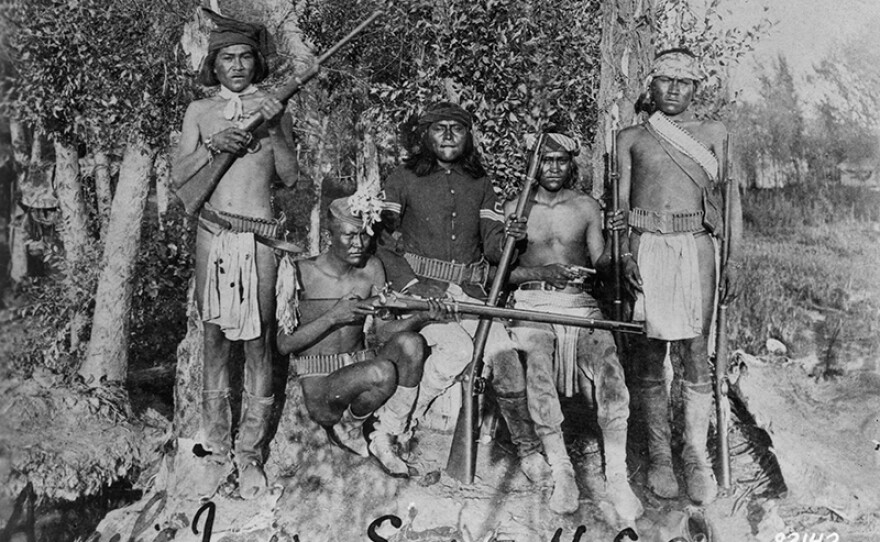Explore the complicated ways the culture and traditions of Native Americans have affected their participation in the United States military on “The Warrior Tradition.”
The one-hour documentary tells the stories of Native American warriors from their own points of view – stories of service and pain, of courage and fear.
“The Warrior Tradition” dispels the old duality of the Noble Savage/helpless victim that has dominated our cultural portrait of Native Americans for more than a century.
But it’s a more complicated story.
Indian warriors have a wide mix of emotions and motives – patriotism, pride, rage, courage, practicality, and spirituality, all mingling with an abiding respect for tribal, familial, and national traditions.
Even the numbers tell a story.
During World War I, not all Native Americans were even citizens of the United States, and couldn’t be drafted, yet more than 12,000 Indian men volunteered.
Even in Vietnam, an unpopular war, 90 percent of the 42,000 Native people who served were volunteers.
“That’s the irony,” said Patty Loew, member of the Bad River Band of Lake Superior Ojibwe, a professor of Journalism at Northwestern University, and a consultant for this film. “Here’s a government that has, at various times, tried to exterminate or assimilate Native Americans, destroy their culture, take their land, and yet here are Native Americans serving in the highest percentages of any race or ethnicity relative to their numbers in the US military.”
There’s more to the story than heroism. And there’s more than one way to be a warrior.
More than a dozen Native American veterans appear in the film, having served in Army, Navy, Marine Corps, Air Force, and Army National Guard.
They each have their own reasons for having served and for how the warrior tradition played a role in their lives.
Among those who share their stories are veterans of wars and conflicts ranging from World War II to ongoing deployments in the Middle East.

They are members of tribes from all over the United States, including the Comanche and Apache Tribes of Oklahoma, the Mississippi Choctaw, Navajo Nation, and the Menominee, among many others.

Watch On Your Schedule:
“The Warrior Tradition” will stream for free and will be available on all PBS platforms, including PBS.org and the PBS Video App, available on iOS, Android, Roku, Apple TV, Amazon Fire TV, Samsung Tizen, and Chromecast.
The film will be available on DVD at shop.pbs.org.
Join The Conversation:
PBS is on Facebook, Instagram, and you can follow @PBS on Twitter. #WarriorTraditionPBS
Florentine Films/Hott Productions is on Facebook.
Credits:
A co-production of WNED-TV and Florentine Films/Hott Productions, Inc. It was produced and directed by Lawrence Hott and written by Ken Chowder. John Grant is executive producer for WNED-TV.





